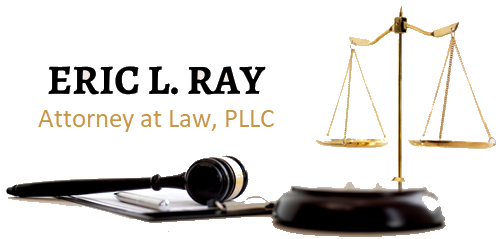Driving Under the Influence
Driving under the influence (DUI) of drugs and/or alcohol is often not taken seriously by clients because a first offense is a low-level misdemeanor. However, the penalties in Kentucky can be very harsh, especially if the charges involved another driver or pedestrian being injured. A DUI conviction can impact your freedom and driving privileges, as well as your auto insurance rates.
While it’s best to entirely avoid a DUI charge by not driving after drinking or use of any other substance that impairs your driving ability, a knowledgeable and experienced DUI defense lawyer like Eric L. Ray can help you by reviewing the specifics of your case. For example, Eric will check to make sure the police did everything correctly and that your civil rights were not violated. He will look at the circumstances surrounding your arrest to determine the best defense. Because DUI laws are being updated regularly, it is critical that you hire a Kentucky DUI attorney like Eric Ray, who knows and regularly practices criminal law in Lexington, Kentucky and the surrounding counties.
The DUI statute in Kentucky is KRS 189A.010, which states that a person shall not operate or be in physical control of a motor vehicle anywhere in this state:
(a) Having an alcohol concentration of 0.08 or more as measured by a scientifically reliable test or tests of a sample of the person’s breath or blood taken within two (2) hours of cessation of operation or physical control of a motor vehicle;
(b) While under the influence of alcohol;
(c) While under the influence of any other substance or combination of substances which impairs one’s driving ability;
(d) While the presence of a controlled substance listed in subsection (12) of this section is detected in the blood, as measured by a scientifically reliable test, or tests, taken within two (2) hours of cessation of operation or physical control of a motor vehicle;
(e) While under the combined influence of alcohol and any other substance which impairs one’s driving ability; or
(f) Having an alcohol concentration of 0.02 or more as measured by a scientifically reliable test or tests of a sample of the person’s breath or blood taken within two (2) hours of cessation of operation or physical control of a motor vehicle, if the person is under the age of twenty-one (21).
What controlled substances fulfill section (d) from above?
(a) Any Schedule I controlled substance except marijuana; (b) Alprazolam; (c) Amphetamine; (d) Buprenorphine; (e) Butalbital; (f) Carisoprodol; (g) Cocaine; (h) Diazepam; (i) Hydrocodone; (j) Meprobamate; (k) Methadone; (l) Methamphetamine; (m) Oxycodone; (n) Promethazine; (o) Propoxyphene; and (p) Zolpidem.
What are the penalties for drivers 21 and over?
1st offense within a ten (10) year period, be fined not less than two hundred dollars ($200) nor more than five hundred dollars ($500), or be imprisoned in the county jail for not less than forty-eight (48) hours nor more than thirty (30) days, or both. Following sentencing, the defendant may apply to the judge for permission to enter a community labor program for not less than forty-eight (48) hours nor more than thirty (30) days in lieu of fine or imprisonment, or both. If any of the aggravating circumstances listed in subsection (11) of this section are present while the person was operating or in physical control of a motor vehicle, the mandatory minimum term of imprisonment shall be four (4) days, which term shall not be suspended, probated, conditionally discharged, or subject to any other form of early release;
2nd offense within a ten (10) year period, be fined not less than three hundred fifty dollars ($350) nor more than five hundred dollars ($500) and shall be imprisoned in the county jail for not less than seven (7) days nor more than six (6) months and, in addition to fine and imprisonment, may be sentenced to community labor for not less than ten (10) days nor more than six (6) months. If any of the aggravating circumstances listed in subsection (11) of this section are present, the mandatory minimum term of imprisonment shall be fourteen (14) days, which term shall not be suspended, probated, conditionally discharged, or subject to any other form of early release;
3rd offense within a ten (10) year period, be fined not less than five hundred dollars ($500) nor more than one thousand dollars ($1,000) and shall be imprisoned in the county jail for not less than thirty (30) days nor more than twelve (12) months and may, in addition to fine and imprisonment, be sentenced to community labor for not less than ten (10) days nor more than twelve (12) months. If any of the aggravating circumstances listed in subsection (11) of this section are present, the mandatory minimum term of imprisonment shall be sixty (60) days, which term shall not be suspended, probated, conditionally discharged, or subject to any other form of early release;
4th or subsequent offense within a ten (10) year period, be guilty of a Class D felony. If any of the aggravating circumstances listed in subsection (11) of this section are present, the mandatory minimum term of imprisonment shall be two hundred forty (240) days, which term shall not be suspended, probated, conditionally discharged, or subject to any other form of release.
What are the punishments for a DUI where the driver is under the age of 21?
Any person who violates the provisions of subsection (1)(f) of this section shall be fined no less than one hundred dollars ($100) and no more than five hundred dollars ($500), or sentenced to twenty (20) hours of community service in lieu of a fine. A person subject to the penalties of this subsection shall not be subject to the penalties established in subsection (5) of this section or any other penalty established pursuant to KRS Chapter 189A, except those established in KRS 189A.040(1) and KRS 189A.070.
If the person is under the age of twenty-one (21) and there was an alcohol concentration of 0.08 or greater based on the definition of alcohol concentration in KRS 189A.005, the person shall be subject to the penalties established pursuant to subsection (5) of this section.
2nd or 3rd offense within a ten (10) year period, the minimum sentence of imprisonment or community labor shall not be suspended, probated, or subject to conditional discharge or other form of early release.
4th or subsequent offense under this section, the minimum term of imprisonment shall be one hundred twenty (120) days, and this term shall not be suspended, probated, or subject to conditional discharge or other form of early release. For a second or subsequent offense, at least forty-eight (48) hours of the mandatory sentence shall be served consecutively.
What is an aggravator?
The following circumstances make a DUI aggravated:
(a) Operating a motor vehicle in excess of thirty (30) miles per hour above the speed limit;
(b) Operating a motor vehicle in the wrong direction on a limited access highway;
(c) Operating a motor vehicle that causes an accident resulting in death or serious physical injury as defined in KRS 500.080;
(d) Operating a motor vehicle while the alcohol concentration in the operator’s blood or breath is 0.15 or more as measured by a test or tests of a sample of the operator’s blood or breath taken within two (2) hours of cessation of operation of the motor vehicle;
(e) Refusing to submit to any test or tests of one’s blood, breath, or urine requested by an officer having reasonable grounds to believe the person was operating or in physical control of a motor vehicle in violation of subsection (1) of this section; and
(f) Operating a motor vehicle that is transporting a passenger under the age of twelve (12) years old.

